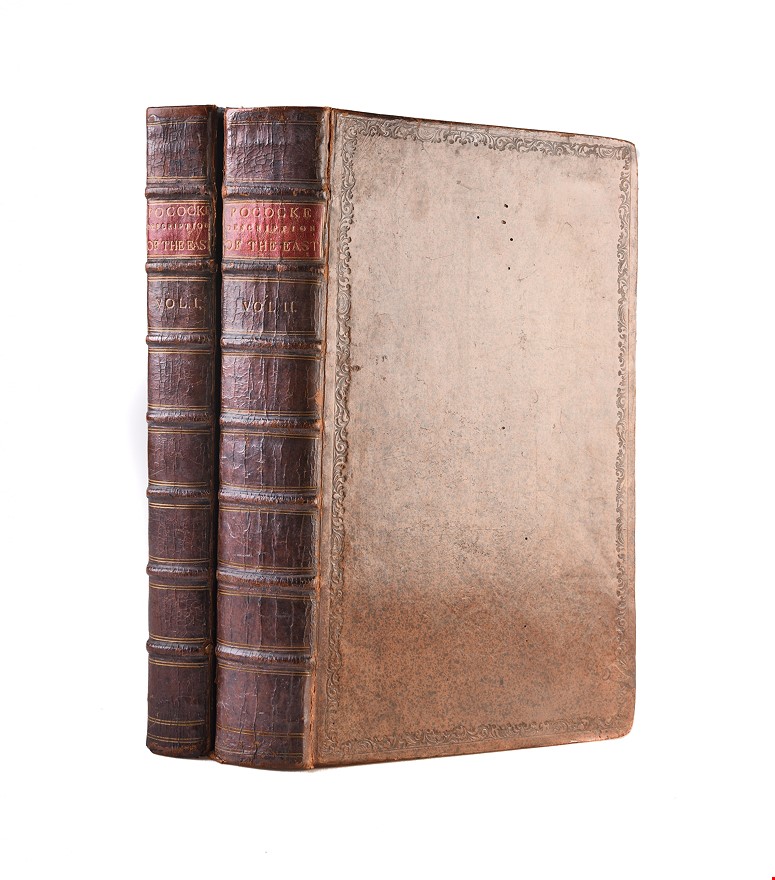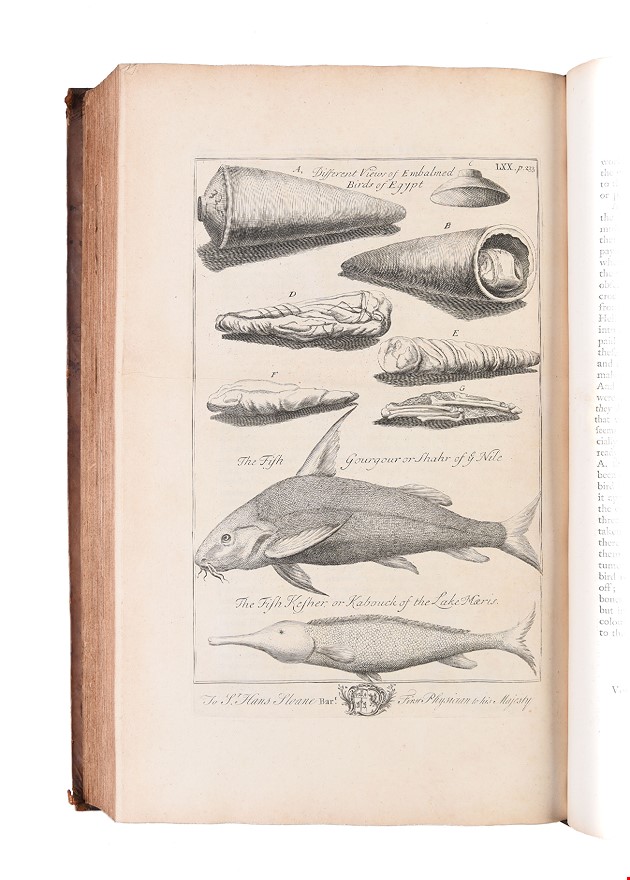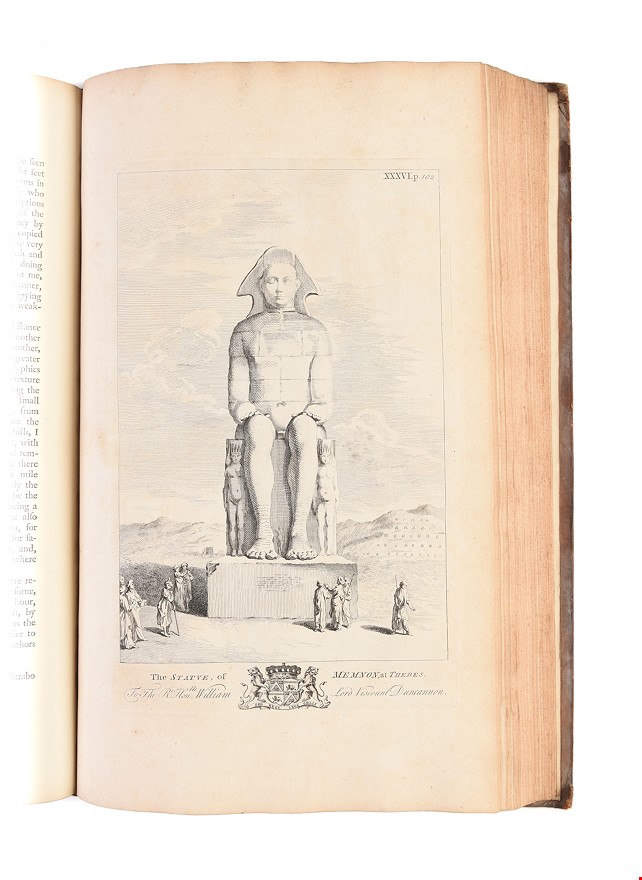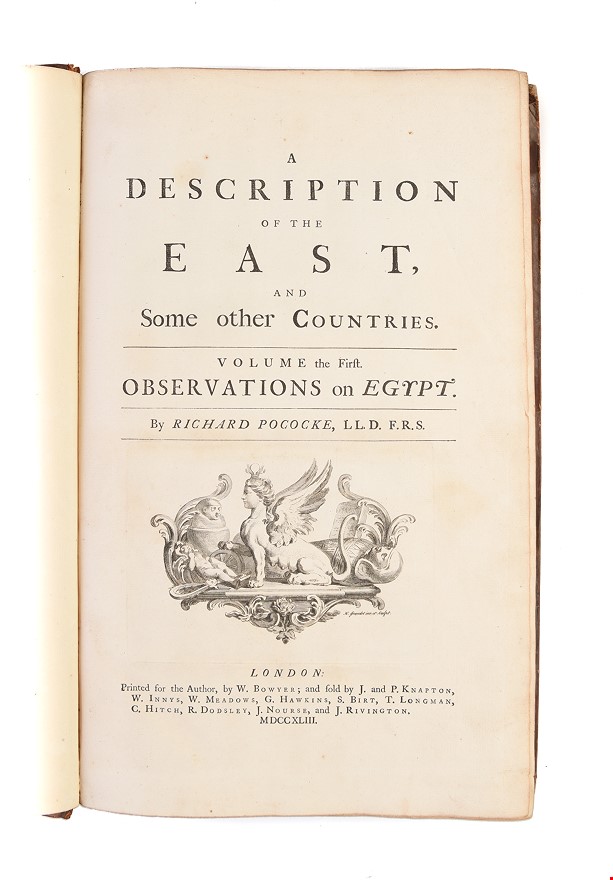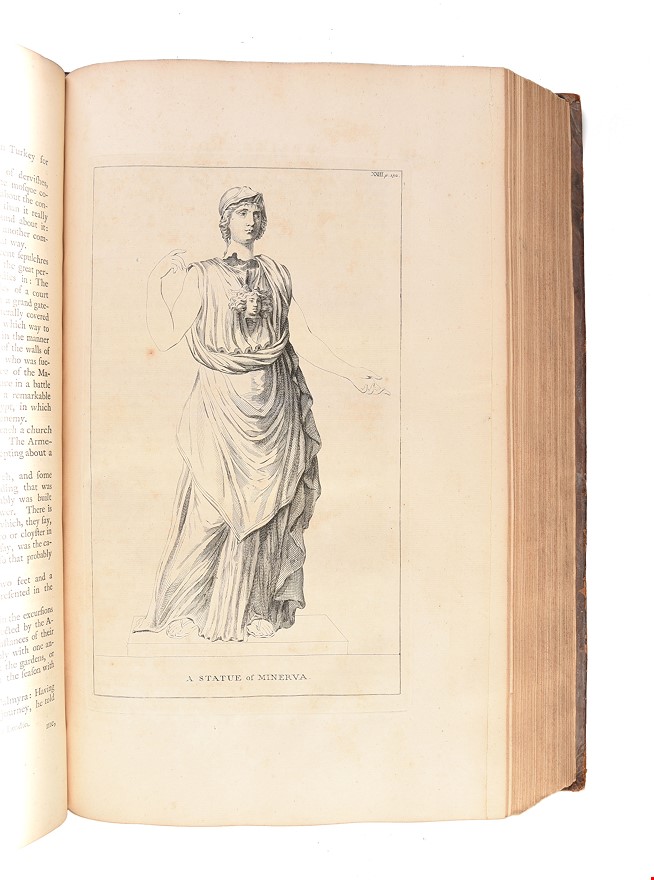A Description of the East, and Some other Countries.
POCOCKE Richard (1743-1745.)
£6000.00 [First Edition]
Available to view at our Curzon Street shop.
A handsome copy
First edition. 3 parts bound in 2 volumes. Engraved title-page vignettes, an engraved dedication in volume 2, and 178 engraved plates and maps. Folio. Contemporary speckled calf, the edges blind-tooled, the spines with raised bands ruled in gilt and contrasting lettering pieces; leather repairs (by Maggs c.1959) to head- and tailcaps, joints cracked but holding firmly, extremities a little rubbed, corners bumped, otherwise very good. Interior exceptionally clean and fresh. Engraved bookplates of John Brinton and Sir John C. Hobhouse to paste-downs. Typescript letter to Brinton from Maggs adhered to free endpaper of first vol. (another letter from Maggs loosely inserted). [2], vi, [8 contents of text and plates], 310; [2], xi, [1 errata], 268, vii, [1 errata], 308pp. London, Printed for the Author by W. Bowyer, and sold by J. and P. Knapton,
A handsome copy of an essential work on Egypt and the Levant, from the library of the traveller and friend of Lord Byron, Sir John Hobhouse (1786-1869).
Richard Pococke (1704-1765) was educated at Corpus Christi College, Oxford and enjoyed a successful start to his ecclesiastical career before deciding to undertake a period of foreign travel in his late twenties. In 1733 he started out on the well-trodden path of the grand tour but carried on beyond its bounds, into the less visited Near East.
From Alexandria (reached in September 1737), he explored Rosetta (Rashid), Dandarah, Luxor and Cairo, taking down descriptions, plans and sketches of, inter alia, the Sphinx, the pyramids at Giza and one of the staggering statues of Amenhotep III. He then pushed on to Palestine, Lebanon and Syria, where his attention was not only drawn to the seductive antiquity of Jerusalem and Baalbek but also the contemporary urban life of Damascus and Aleppo. In Damascus he was impressed by the grandeur of the Umayyad Mosque and the “remarkably pleasant” (v.II, p.122) coffee houses, and found many aspects of Aleppo to his liking, such as air “so fine, that the people lie on the tops of their houses during the summer season” (v.II, p.151). His westward journey included stops at Cyprus, Crete, parts of Asia Minor and Greece.
The first volume of A Description of the East…, focusing on Egypt, was published a year after his return to England in 1743. Its informational richness, geographical novelty and attractive illustrations overcame a style lacking literary flourishes — Pococke’s introduction defended the dryness of his descriptions — to yield a positive reception from the reading public. Buoyed by its success, he set about the second volume “with greater cheerfulness” (v.II, p.iii) and it was also well received. Success as a writer did not see him stray from his chosen career and he spent the rest of his life in the Irish Church, becoming the Archdeacon of Dublin in 1745 and the Bishop of Ossory in 1756. His final position was Bishop of Meath, where he planted cedar trees from seeds he is said to have retained from his time in Lebanon. (Cf. Daniel William Kemp, ‘Biographical Sketch’ in Pococke’s Tours in Scotland, 1747, 1750, 1760, Edinburgh, 1887, p.lx).
Provenance: 1). Sir John C. Hobhouse (1786-1869), friend and travelling companion (and later executor) of Byron. 2). John Brinton, noted collector of books on the Near and Middle East.
Atabey, 965; Blackmer, 1323; Ibrahim-Hilmy II, p. 124.
Stock Code: 220258
